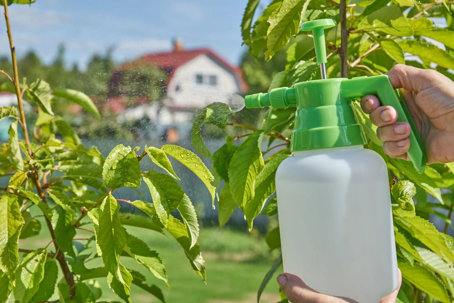Kennewick’s blend of warm, dry summers, bustling neighborhoods, and a growing business community creates a unique backdrop for pest activity in the Tri-Cities. Homeowners and facility managers alike are looking for ways to stay ahead of ants, rodents, stinging insects, occasional invaders like elm seed bugs, and more—without sacrificing comfort, sustainability, or compliance. The good news: the pest control industry is evolving fast. From smart sensors to precision treatments and powerful data analytics, today’s solutions deliver proactive, discreet, and reliable results tailored to local conditions. Here’s how these innovations are shaping pest management in Kennewick—and what they mean for your home or business.
Local Pressures That Shape Pest Activity in Kennewick
Across the Pacific Northwest, milder winters and longer warm seasons can extend the window when pests breed and forage. The Northwest has warmed by about 2°F since 1900, a shift that can influence insect development cycles, rodent behavior, and seasonal pressure on buildings and landscaping. In our region, that often translates to earlier spring ant trails, more persistent wasp activity through late summer and fall, and rodents probing structures for entry as temperatures swing between day and night.
Kennewick also faces a recurring nuisance from the elm seed bug—an invasive species that congregates on sun‑warmed walls and seeks entry to structures during hot weather. These local dynamics make proactive, tech‑enabled, and precision‑applied pest strategies especially valuable.
Smart Pest Control Technology: 24/7 Monitoring and Faster Response
Smart monitoring devices—think connected rodent stations, vibration or motion sensors in sensitive zones, and app‑enabled service logs—are moving pest control from scheduled check‑ins to continuous awareness. Instead of waiting for visual signs, digital systems send real‑time alerts the moment activity occurs, so your service team can respond before a small issue becomes a costly infestation.
For Kennewick restaurants, food storage, healthcare, schools, and multifamily properties, these “always on” tools deliver practical benefits. Remote monitoring can reduce surprises between visits, pinpoint the exact location of activity inside large facilities, and support documented corrective actions for audits. Even in single‑family homes, smart traps and visual reporting make it simpler to see what’s happening and why: you’re not guessing where pests are entering or which areas need attention—you can see the pattern, then fix it quickly.
Smart does not mean complicated. The best systems blend into your space, protect privacy, and integrate with service software so customers receive concise visit summaries, photos, and recommendations without technical headaches. For busy property managers around Columbia Center or homeowners in West Kennewick, that kind of clarity can be the difference between reacting to pest problems and preventing them.
Eco-Forward Formulations and Precision Applications
Formulations have advanced significantly, giving professionals more ways to target pests precisely while supporting healthy homes, businesses, and landscapes. Bait matrices and gels allow pinpoint placement in cracks and crevices. Insect growth regulators interrupt life cycles where pests breed. Mineral and desiccant dusts provide long‑lasting barriers in voids. Botanical‑derived and reduced‑risk products add further options that align with modern expectations for sustainability and safety when used as labeled and applied by trained professionals.
Just as important is how products are applied. Integrated Pest Management (IPM) remains the gold standard: it emphasizes inspection, exclusion, sanitation, habitat modification, and the least‑disruptive treatment necessary to reach your goals. IPM is both practical and effective, and it adapts naturally to residential and commercial settings. In Kennewick’s climate, that often means sealing utility penetrations, repairing weather‑stripping, trimming vegetation away from siding, managing irrigation schedules to reduce conducive moisture, and then applying targeted treatments that support long‑term control.
What These Trends Mean for Kennewick Homeowners
Homeowners benefit most when pest control is proactive, not reactive. With smart monitoring and IPM‑first strategies, small issues are flagged early, and treatments are focused where they’ll have the greatest impact. You’ll see fewer surprises between visits, cleaner baseboards and cabinets thanks to bait‑forward tactics, and actionable recommendations that make your home less attractive to pests—like small exterior repairs, storage tweaks in the garage, and landscaping adjustments.
The result is a home that’s easier to maintain and more comfortable year‑round. Families appreciate discreet service, digital notifications that fit busy schedules, and plans that address both nuisance pests and health‑related concerns in a transparent way. If you’re seeing seasonal ant activity or noticing pests seeking entry as temperatures swing, our local team is ready to help.
What These Trends Mean for Kennewick Businesses
For businesses—from tasting rooms and restaurants to healthcare, warehousing, and property management—these innovations translate to risk reduction and operational confidence. Smart monitoring in back‑of‑house areas and delivery zones can detect rodent or insect activity immediately. Analytics highlight recurring conditions, such as open dock doors during peak pressure hours or specific storage practices that attract pests. Service transparency supports internal audits and external inspections, and allows managers to verify that preventive measures are working.
How Proterra Is Putting Innovation to Work in Kennewick
At Proterra Pest Control, we pair local expertise with forward‑thinking tools:
- Thorough inspections focused on the real drivers of pest activity in Kennewick’s climate.
- Smart monitoring options where they make sense, so we can act fast and show you clear results.
- IPM‑first service plans with targeted formulations and precise applications.
- Clean, concise digital reporting that gives you transparency and peace of mind.
Whether you manage a facility or want a home service that’s proactive and easy to live with, we’ll build a plan around your goals, your schedule, and your property. If you’re ready to see how modern pest control can work for you in the Tri‑Cities, connect with us at Proterra Pest Control.

